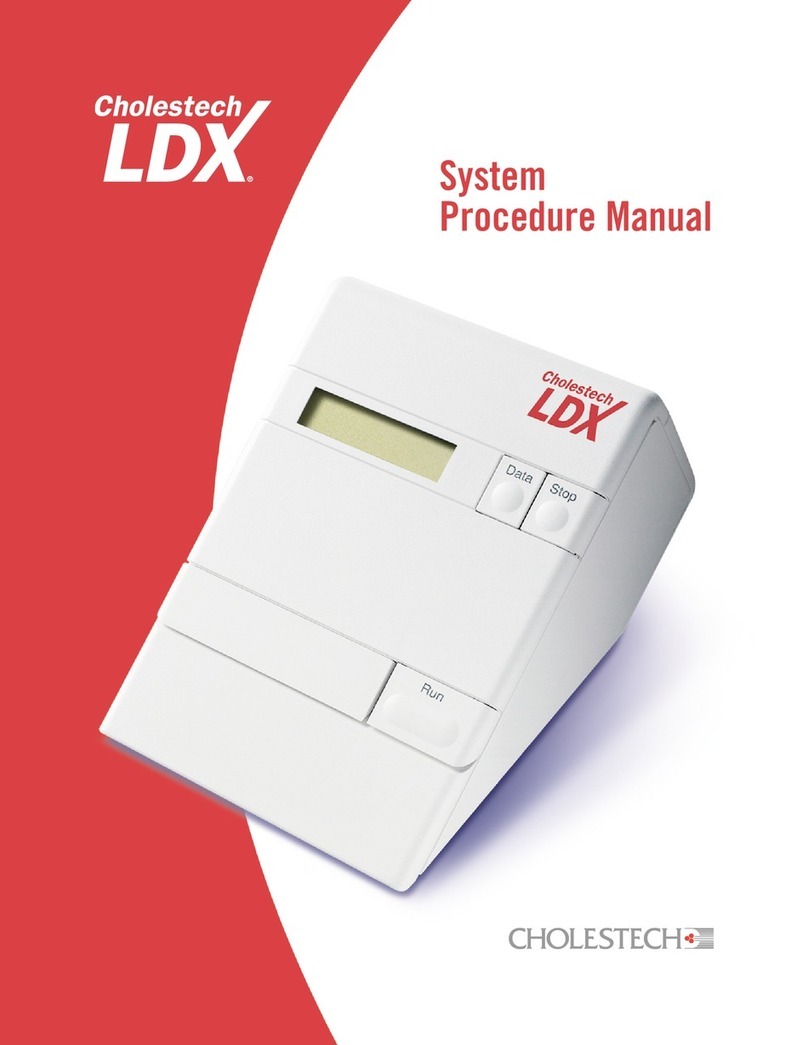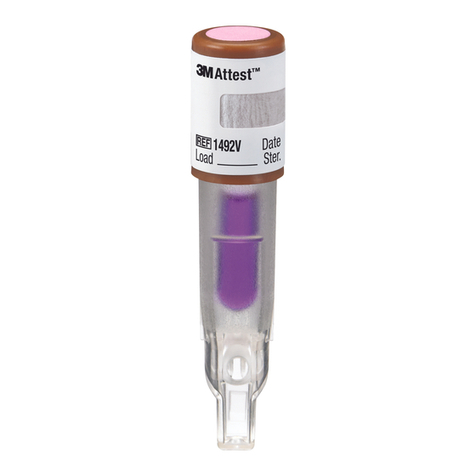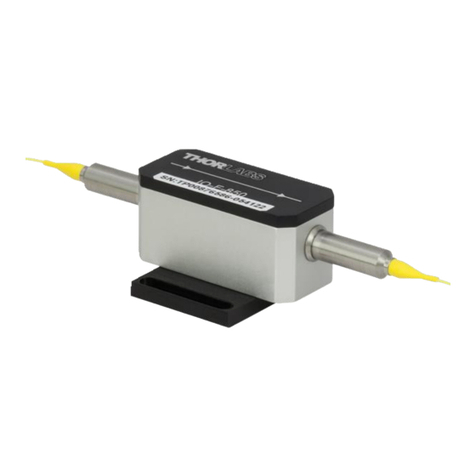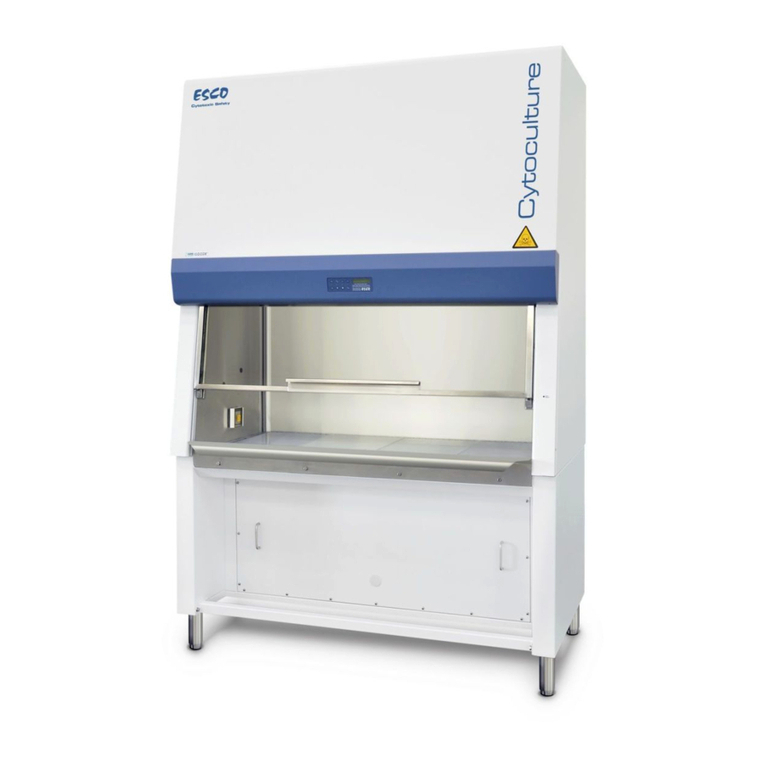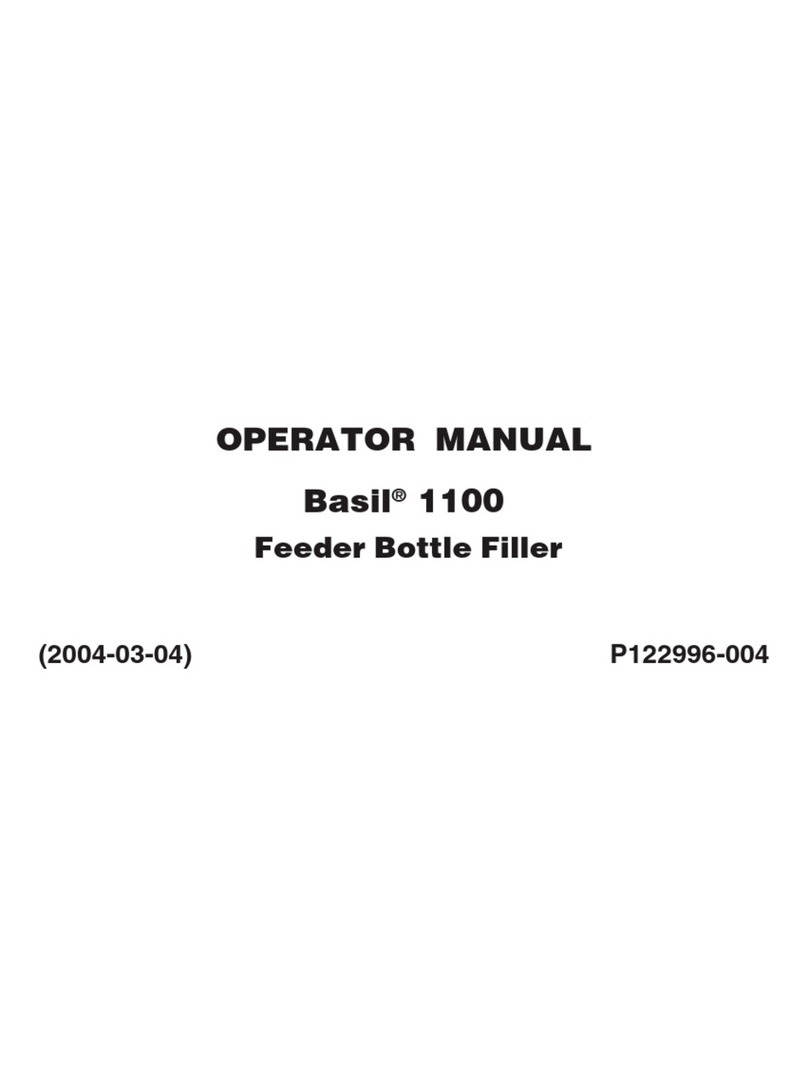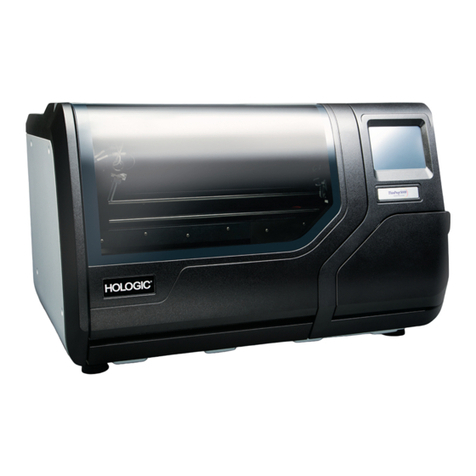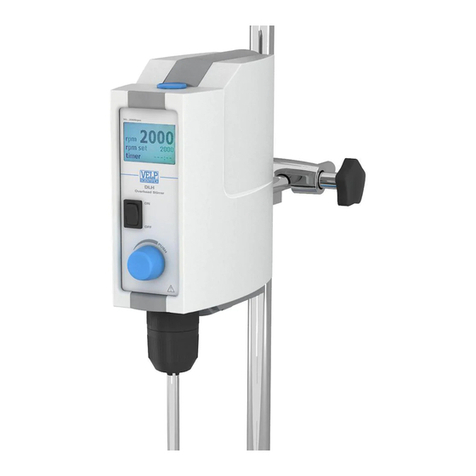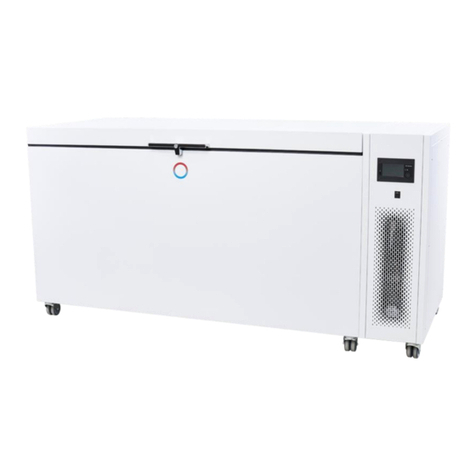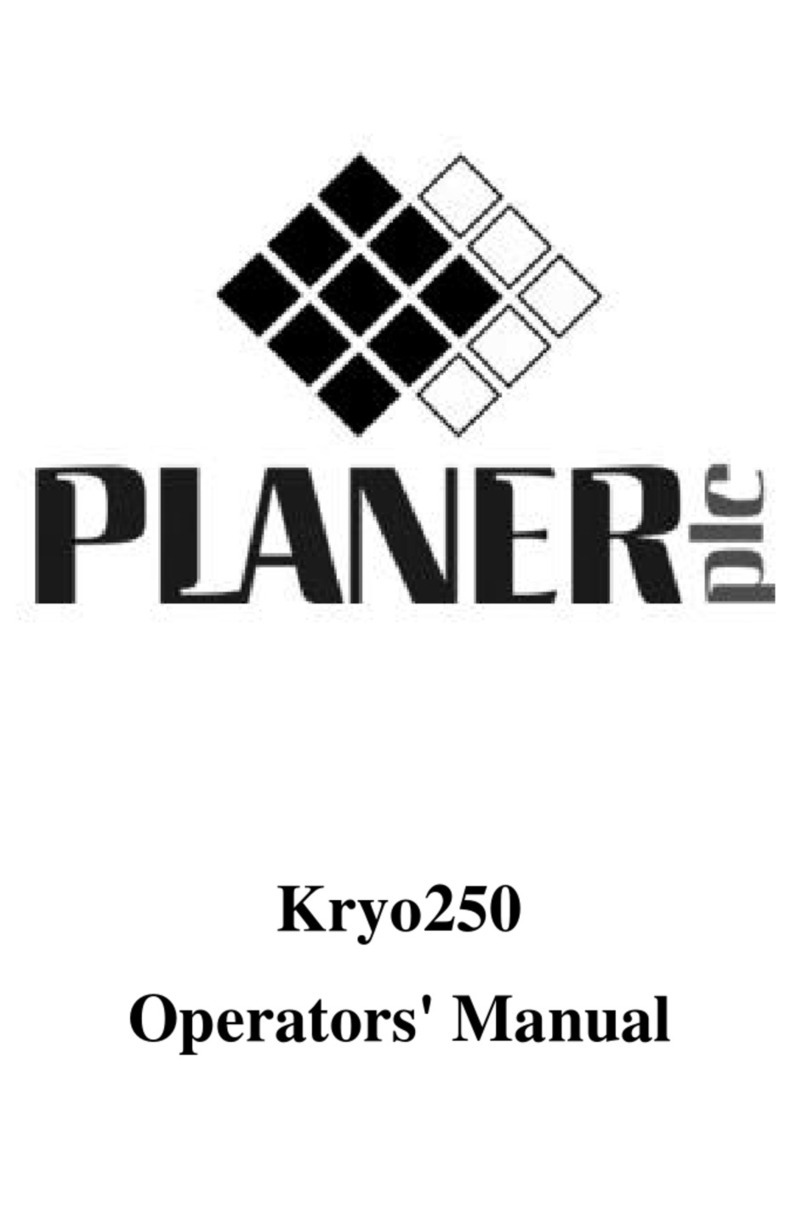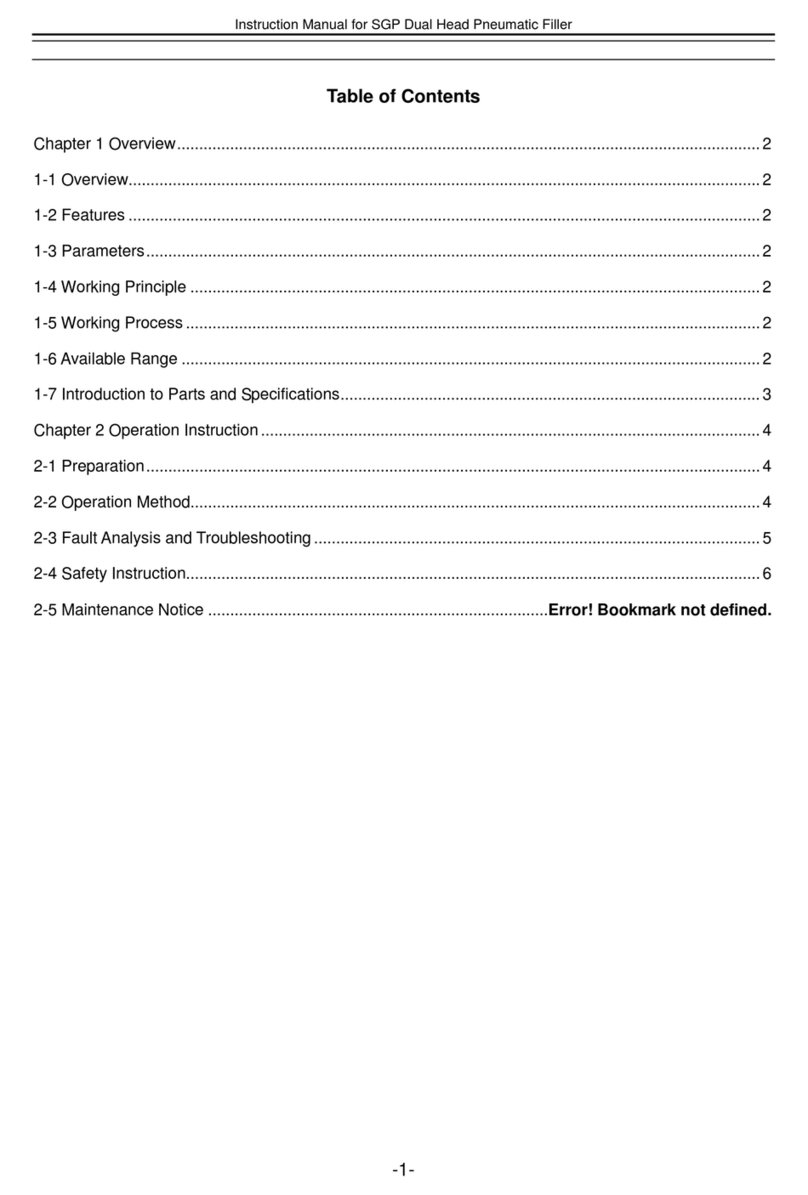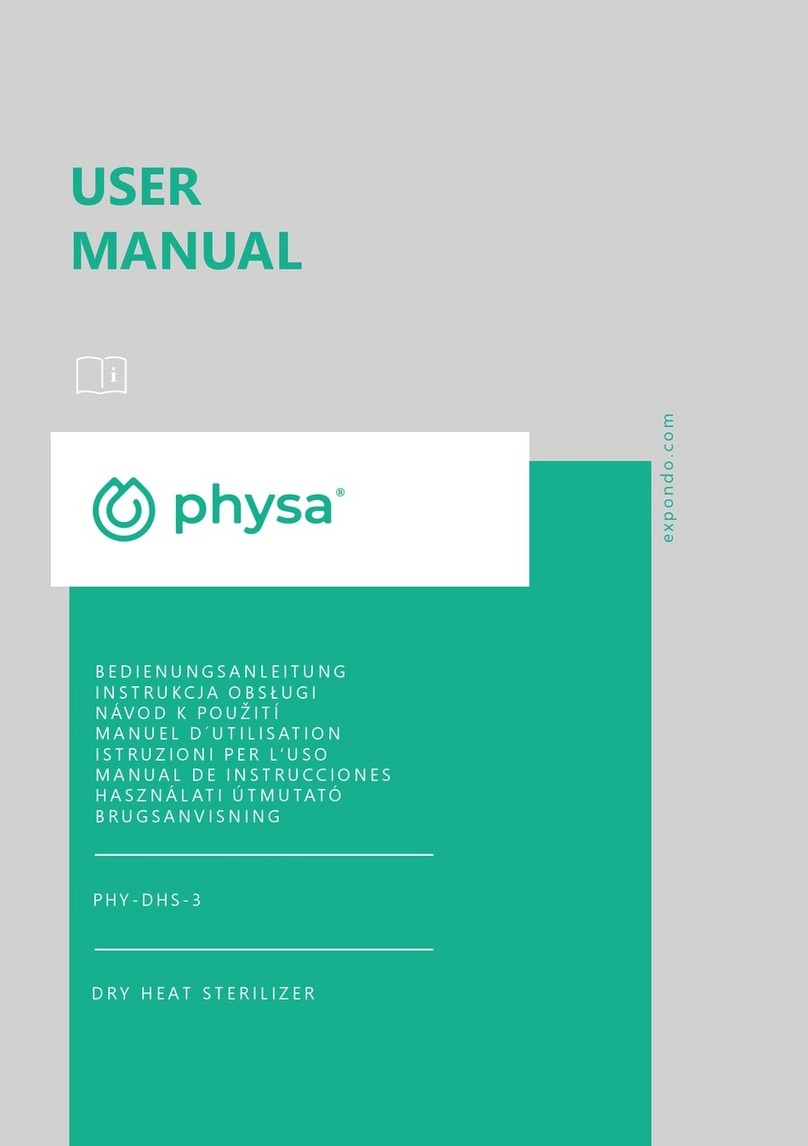Cholestech GDX Reference guide

iTABLE OF CONTENTS
Cholestech GDX System Procedure Manual
Foreword – Procedure Manual Overview . . . . . . . . . . . . . . . . . . . . . . . . . . . . . . . .iii
Introduction – Overview of a Quality Assurance Program . . . . . . . . . . . . . . . . . . . .iv
1.0 Setup and Maintenance
1.1 Introduction . . . . . . . . . . . . . . . . . . . . . . . . . . . . . . . . . . . . . . . . . . . . . . . . . . . . . .2
1.2 Environmental Requirements . . . . . . . . . . . . . . . . . . . . . . . . . . . . . . . . . . . . . . . . .2
1.3 Optics Check Cartridge . . . . . . . . . . . . . . . . . . . . . . . . . . . . . . . . . . . . . . . . . . . . . .2
1.4 Optics Check Cartridge Test Procedure . . . . . . . . . . . . . . . . . . . . . . . . . . . . . . . . . .2
1.5 Shelf Life Stability . . . . . . . . . . . . . . . . . . . . . . . . . . . . . . . . . . . . . . . . . . . . . . . . . .3
1.6 Laboratory Temperature Records . . . . . . . . . . . . . . . . . . . . . . . . . . . . . . . . . . . . . .4
1.7 Instrument History Record . . . . . . . . . . . . . . . . . . . . . . . . . . . . . . . . . . . . . . . . . . .4
1.8 Cholestech GDX System Initial Setup . . . . . . . . . . . . . . . . . . . . . . . . . . . . . . . . . . .4
1.9 Maintenance and Cleaning of the Cholestech GDX System . . . . . . . . . . . . . . . . . . .5
1.10 Course of Action If System Becomes Inoperable . . . . . . . . . . . . . . . . . . . . . . . . . . .5
1.11 Procedure Sign-Off . . . . . . . . . . . . . . . . . . . . . . . . . . . . . . . . . . . . . . . . . . . . . . . . .6
1.12 Reference(s) and Bibliography . . . . . . . . . . . . . . . . . . . . . . . . . . . . . . . . . . . . . . . .6
2.0 Specimen Collection and Handling
2.1 Introduction . . . . . . . . . . . . . . . . . . . . . . . . . . . . . . . . . . . . . . . . . . . . . . . . . . . . .8
2.2 Fingerstick Procedure . . . . . . . . . . . . . . . . . . . . . . . . . . . . . . . . . . . . . . . . . . . . . .8
2.3 Procedure Sign-Off . . . . . . . . . . . . . . . . . . . . . . . . . . . . . . . . . . . . . . . . . . . . . . . . .9
2.4 Venipuncture Procedure . . . . . . . . . . . . . . . . . . . . . . . . . . . . . . . . . . . . . . . . . . . .9
2.5 Procedure Sign-Off . . . . . . . . . . . . . . . . . . . . . . . . . . . . . . . . . . . . . . . . . . . . . . . .11
2.6 Reporting Results Properly . . . . . . . . . . . . . . . . . . . . . . . . . . . . . . . . . . . . . . . . . .12
2.7 Procedure Sign-Off . . . . . . . . . . . . . . . . . . . . . . . . . . . . . . . . . . . . . . . . . . . . . . . .13
2.8 Proper Specimen Storage . . . . . . . . . . . . . . . . . . . . . . . . . . . . . . . . . . . . . . . . . . .13
2.9 Procedure to Properly Remove a Rubber Stopper from an Evacuated Tube . . . . . .13
2.10 Reference(s) and Bibliography . . . . . . . . . . . . . . . . . . . . . . . . . . . . . . . . . . . . . . .14
3.0 Quality Control
3.1 Introduction . . . . . . . . . . . . . . . . . . . . . . . . . . . . . . . . . . . . . . . . . . . . . . . . . . . . .16
3.2 Handling Controls . . . . . . . . . . . . . . . . . . . . . . . . . . . . . . . . . . . . . . . . . . . . . . . .16
3.3 External Quality Control . . . . . . . . . . . . . . . . . . . . . . . . . . . . . . . . . . . . . . . . . . . .16
3.4 Control Range . . . . . . . . . . . . . . . . . . . . . . . . . . . . . . . . . . . . . . . . . . . . . . . . . . .17
4.0 A1C Test Procedure
4.1 Introduction . . . . . . . . . . . . . . . . . . . . . . . . . . . . . . . . . . . . . . . . . . . . . . . . . . . . .20
4.2 Medical Importance . . . . . . . . . . . . . . . . . . . . . . . . . . . . . . . . . . . . . . . . . . . . . . .20
4.3 Principle of the Test . . . . . . . . . . . . . . . . . . . . . . . . . . . . . . . . . . . . . . . . . . . . . . .20
4.4 Procedure . . . . . . . . . . . . . . . . . . . . . . . . . . . . . . . . . . . . . . . . . . . . . . . . . . . . . .21
4.5 Test Interpretation . . . . . . . . . . . . . . . . . . . . . . . . . . . . . . . . . . . . . . . . . . . . . . . .26
4.6 Technical Assistance . . . . . . . . . . . . . . . . . . . . . . . . . . . . . . . . . . . . . . . . . . . . . .27
4.7 Procedure Sign-Off . . . . . . . . . . . . . . . . . . . . . . . . . . . . . . . . . . . . . . . . . . . . . . . .27
4.8 Reference(s) and Bibliography . . . . . . . . . . . . . . . . . . . . . . . . . . . . . . . . . . . . . . .28
5.0 Safety
5.1 Introduction . . . . . . . . . . . . . . . . . . . . . . . . . . . . . . . . . . . . . . . . . . . . . . . . . . . . .30
5.2 Reference(s) and Bibliography . . . . . . . . . . . . . . . . . . . . . . . . . . . . . . . . . . . . . . .30
Table of Contents
TABLE OF CONTENTS CONTINUE >

ii TABLE OF CONTENTS
Cholestech GDX System Procedure Manual
6.0 Training
6.1 Introduction . . . . . . . . . . . . . . . . . . . . . . . . . . . . . . . . . . . . . . . . . . . . . . . . . . . . .32
6.2 Cholestech GDX Training Checklist . . . . . . . . . . . . . . . . . . . . . . . . . . . . . . . . . . . .32
6.3 Certificate of Training – Fingerstick Blood Collection . . . . . . . . . . . . . . . . . . . . . . .32
6.4 Online Training . . . . . . . . . . . . . . . . . . . . . . . . . . . . . . . . . . . . . . . . . . . . . . . . . . .32
7.0 Material Safety Data Sheets . . . . . . . . . . . . . . . . . . . . . . . . . . . . . . . . . . . . . . . . . . . .34
8.0 Proficiency Testing
8.1 Overview of Proficiency Testing . . . . . . . . . . . . . . . . . . . . . . . . . . . . . . . . . . . . . . .42
8.2 Proficiency Testing Agencies . . . . . . . . . . . . . . . . . . . . . . . . . . . . . . . . . . . . . . . .43
8.3 Reference(s) and Bibliography . . . . . . . . . . . . . . . . . . . . . . . . . . . . . . . . . . . . . . .43
9.0 Troubleshooting
9.1 Time/Sequence Errors . . . . . . . . . . . . . . . . . . . . . . . . . . . . . . . . . . . . . . . . . . . . .46
9.2 Analyzer/Test Errors . . . . . . . . . . . . . . . . . . . . . . . . . . . . . . . . . . . . . . . . . . . . . . .47
10.0 Glossary of Terms . . . . . . . . . . . . . . . . . . . . . . . . . . . . . . . . . . . . . . . . . . . . . . . . . .54
10.1 Reference(s) and Bibliography . . . . . . . . . . . . . . . . . . . . . . . . . . . . . . . . . . . . . . .59
11.0 Master Forms . . . . . . . . . . . . . . . . . . . . . . . . . . . . . . . . . . . . . . . . . . . . . . . . . . . . .61
A1C Result Log
Temperature Chart
Instrument History Record
Information and Service Log
Initial Setup Checklist
Equipment Maintenance/Cleaning Log
Instruments In-Use Record
Patient Result Label Log
Quality Assurance Record
Control Range Calculation Form
Accuracy Study Data
Precision Calculation Form
Training Checklist
Certificate of Training for Fingerstick Blood Collection
<TABLE OF CONTENTS

iiiFOREWORD
Cholestech GDX System Procedure Manual
Procedure Manual Overview
This Procedure manual has been designed to instruct Cholestech GDX users in how to
comply with good laboratory practices and assist in complying with applicable regulations.
The Cholestech GDX System Procedure Manual covers:
• Setup and Maintenance: Procedure to properly run an optics check and record the
values for the Cholestech GDX System. In addition, the section provides specific
information about recording laboratory environment conditions.
• Specimen Collection and Handling: General procedures applicable to obtaining a
suitable specimen and running a test on the Cholestech GDX System.
• Quality Control: Discusses laboratory activities designed to ensure that each test system
is working properly and that the test results satisfy quality standards.
• Testing Procedures: A test procedure that covers the Cholestech GDX.
• Safety: Allows you to file your safety guidelines as recommended by OSHA.
• Training: A checklist as a guideline to train personnel on the Cholestech GDX System.
• Material Safety Data Sheets: A copy of Cholestech Corporation’s MSDS for the
Cholestech GDX test cartridges, controls and Optics Check Cartridge. You can add
MSDSs as required.
• Proficiency Testing Guidance: Discusses the importance of proficiency testing, how
testing is performed and lists agencies offering proficiency testing.
• Master Forms: Master forms are provided for you to copy and use as needed.
An icon (a letter within a shape) will appear at the beginning of each section. These icons
indicate:
Foreword
I
R
O
The information in the following section is “For Information Only.”
The information in the following section is “Recommended” by the manufacturer.
The information in the following section is recommended to comply with OSHA and
CLIA ’88 Moderately Complex Laboratory Regulations, as well as regulations that
apply to users in certain states.
If you need assistance using the manual, please contact Cholestech Technical Service at
800-733-0404.
Please note: The following procedures are outlined as a guide, not a substitute for
complying with state or federal regulations relevant to your site. Cholestech Corporation
does not guarantee that following this guide will result in certification or meeting state or
federal regulations. For further information regarding regulations, please refer to your state
or federal agencies.
<TABLE OF CONTENTS

iv INTRODUCTION
Cholestech GDX System Procedure Manual
Introduction
Overview of a Quality Assurance Program
Quality assurance (QA) is a comprehensive set of policies, procedures and practices
necessary to ensure the quality of laboratory tests. Its purpose is to ensure that over the
long term, the laboratory provides reliable data that accurately reflect the patient’s status.
Quality assurance in a point-of-care laboratory covers nine basic areas:
1. Policies and standards that govern the laboratory cover elements that affect test quality
before (patient preparation, sample collection, etc.), during and after (data transcription
errors, etc.) the testing process.
2. Training: All personnel conducting tests should be properly trained and their training
documented.
3. Safety policies should be adhered to and a safe working environment provided.
4. Procedure manuals should contain operating protocols that are complete, up to date
and available to laboratory personnel.
5. Record keeping: All aspects of the quality assurance program should be documented in
writing as appropriate.
6. Quality control may include initial verification of the test method, routine testing of
quality control materials and a written procedure for responding to “out of control” test
results. All quality control procedures and follow-up actions should be documented.
7. Participation in proficiency testing program is optional for CLIA-waived tests. Proficiency
testing may be performed and documented when required by local or state regulations.
8. Laboratory inspections may be conducted by the appropriate organization to assess
quality assurance and suggest possible improvements.
A successful QA program assures that:
1. Policies and procedures are established in writing and followed by all personnel
involved in the testing process.
2. The test system performs properly at the time patient results are produced.
3. Written records are available to demonstrate that uniform procedures have been
established and are followed.
The material in this procedure manual can assist in assuring that the quality of test results
in the laboratory or at a testing site are satisfactory over time.
<TABLE OF CONTENTS

2SETUP AND MAINTENANCE
Cholestech GDX System Procedure Manual
IRO
For Information Only Recommended Optional Information
1.1 Introduction
This section contains the procedure to properly run an optics check and specific
information about proper maintenance. A sample copy of each form referred to is included
in the Master Forms section of this manual.
1.2 Environmental Requirements
Use your Cholestech GDX System in a location that has:
• Temperature 63–86ºF (17–30ºC)
• A stable work surface
• No direct heat (oven or room heater)
• No bright light (sunlight or a spotlight)
It is important to prevent dust and dirt from getting into the Analyzer. Keep the Analyzer
covered when not in use.
If the temperature or light requirements are not acceptable, the Analyzer will shut down
until they are met.
1.3 Optics Check Cartridge
The Optics Check Cartridge is reusable. It is designed to check that the Analyzer is working
correctly. The cartridge contains a resin with a dye that acts like your blood sample. The
Analyzer will automatically recognize when an Optics Check Cartridge is being used.
The Optics Check Cartridge should be run every day the Cholestech GDX Analyzer is used.
If you are concerned that your test result is incorrect, also run the quality control material.
1.4 Optics Check Cartridge Test Procedure
Do not use a Cholestech GDX Optics Cartridge that is expired, damaged or altered in any way.
1. Plug in the Analyzer and allow to warm up.
2. Place the cartridge in the Analyzer when the Insert Cartridge icon flashes.
• “ ” appears on the display and the Hourglass icon is displayed.
• The Rotate Cartridge icon is displayed. The Analyzer will beep and the light at
Position 1 will flash.
3. Turn the cartridge to Position 1.
• “ ” and the Hourglass icon will show on the display.
• The Rotate Cartridge icon will be displayed. The Analyzer will beep and the light at
Position 2 will flash.
4. Turn the cartridge to Position 2.
• “ ” and the Hourglass icon will show on the display.
• The Rotate Cartridge icon will be displayed. The Analyzer will beep and the light at
Position 3 will flash.
Setup and Maintenance
I
R
R
R
<TABLE OF CONTENTS

3SETUP AND MAINTENANCE
Cholestech GDX System Procedure Manual
IRO
For Information Only Recommended Optional Information
5. Turn the cartridge to Position 3.
• “ ” and the Hourglass icon will show on the display.
• The Rotate Cartridge icon will be displayed.
6. Turn the cartridge to Position 0.
• The Remove and Cartridge icons will be displayed.
7. Remove the cartridge.
• The Analyzer will display the result: e.g., C 10.7%
8. Record the results in the Cholestech GDX A1C Result Log each day.
Note: “ ” stands for Optics Check Cartridge.
9. Press the “enter” button to clear the Optics Check Cartridge result.
Storage
Always store the Optics Check Cartridge at room temperature in its box. This will help to
protect it from damage such as scratches, which may affect the result.
The cartridge must not be left in direct sunlight for long periods while not in use.
The Optics Check Cartridge must be stored at relative humidity of less than 60%.
Results
The results displayed on the Analyzer at the end of Optics Check Cartridge test must be in
the range on the cartridge label.
If the result does not fall within the range displayed, do the following:
• Clean the clear plastic surface of the cartridge with a soft, lint-free cloth. Do this
on the inside and outside of the cartridge. Follow the test from point 2.
• If the result is still not in the correct range, restart the Analyzer by unplugging
and replugging it and run the Optics Check Cartridge.
• If the result is still not in range, contact Cholestech Technical Service.
• If the cartridge is physically scratched, dirty or damaged, replace the cartridge
with a new Optics Check Cartridge.
Warning: For In Vitro Diagnostic Use
When the test is finished, the Optics Check Cartridge should be returned to its protective
packaging for storage. Do not use the Optics Check Cartridge if it has been stored
incorrectly and is scratched or damaged in any way.
For technical help and troubleshooting, please refer to the Cholestech GDX A1C Test
Cartridge package insert and the User Manual. If technical help is required, please contact
Cholestech Technical Service at 800-733-0404.
1.5 Shelf Life Stability
Optics Check Cartridges have a shelf life date. The expiration date is printed on the top of
the Optics Check Cartridge. Do not use the Optics Check Cartridge after the end of the shelf
life date.
R
<TABLE OF CONTENTS

4SETUP AND MAINTENANCE
Cholestech GDX System Procedure Manual
IRO
For Information Only Recommended Optional Information
1.6 Laboratory Temperature Records
Forms are included in this manual (see Master Forms section) to record the temperature of
the laboratory room and refrigerator. Each form is designed for a daily record to be
recorded. There is space for the site identification, the acceptable temperature range and
daily temperature records. Record the temperature and your initials in the allocated spaces.
1.7 Instrument History Record
Proper, continuing care for a laboratory instrument has primary importance, as it minimizes
breakdowns and ensures proper results.
The Instrument History Record allows lab personnel to communicate effectively with
Cholestech Technical Service. You should have a record for your Cholestech GDX System
as well as records for any other instruments in the lab (refer to the Master Forms section of
this manual).
Several general guidelines are helpful in ensuring satisfactory preventive maintenance:
• Select one person to have principal responsibility for a given instrument.
• Make sure that this person is familiar with the user manual, the procedure
manual and the package insert for each test system.
• Perform all required preventive maintenance called for in the Cholestech GDX
Analyzer User Manual.
• Keep all spare parts recommended by the manufacturer on hand.
1.8 Cholestech GDX System Initial Setup
The Initial Setup Checklist is provided to assure that all of the environmental conditions
are met and that the Cholestech GDX System runs properly during the initial setup in
the laboratory. Refer to the Master Forms section of this manual.
The Instrument History Record can be used to record any service performed on the
Cholestech GDX System or other instruments in your laboratory. Both forms can be found
in the Master Forms section of this manual.
Cholestech Corporation will provide technical support to each Cholestech GDX System user.
Any questions regarding the operation of the Cholestech GDX System may be directed to:
Cholestech Corporation
Technical Service Department
3347 Investment Blvd.
Hayward, CA 94545 U.S.A.
Tel 800 733.0404
Fax 510 732.7227
www.cholestech.com
R
R
R
<TABLE OF CONTENTS

5SETUP AND MAINTENANCE
Cholestech GDX System Procedure Manual
IRO
For Information Only Recommended Optional Information
1.9 Maintenance and Cleaning of the Cholestech GDX System
No maintenance is required other than routine cleaning when necessary.
• Clean the outside of the Cholestech GDX Analyzer case with a clean, damp,
nonabrasive cloth. Most spills and stains will be removed with water or a mild
detergent. A solution of 70% isopropyl alcohol, or 5% bleach, or any
nonstaining, commercially available disinfectant are all appropriate cleaning
agents. Do not immerse the instrument in water or other cleaning fluid. Do not
use any abrasive cleanser.
You can record maintenance and cleaning performed on the Cholestech GDX System and
other instruments in your laboratory on the Equipment Maintenance/Cleaning Log in the
Master Forms section of this manual.
1.10 Course of Action If System Becomes Inoperable
Course of Action for the Cholestech GDX System
If the Cholestech GDX System becomes inoperable, call Cholestech Technical Service at
800-733-0404 or 510-732-7200. Until the instrument becomes operable, venous
specimens will be drawn and sent to the following reference laboratory.
Laboratory Name
Laboratory Address
Laboratory Phone No.
or
An alternative Cholestech GDX Analyzer will be used.
Course of Action for Other Instruments in the Lab
Name of Instrument
Technical Service Phone Number
Written Procedure If the Instrument Fails
R
O
<TABLE OF CONTENTS

6SETUP AND MAINTENANCE
Cholestech GDX System Procedure Manual
IRO
For Information Only Recommended Optional Information
Course of Action for Other Instruments in the Lab
Name of Instrument
Technical Service Phone Number
Written Procedure If the Instrument Fails
1.11 Procedure Sign-Off
Approved
Director’s Signature Date
Adopted
Director’s Signature Date
Revised
Director’s Signature Date
Discontinued
Director’s Signature Date
The procedure is not applicable to this laboratory:
Director’s Signature Date
1.12 Reference(s) and Bibliography
1. National Committee for Clinical Laboratory Standards. Physician’s Office Laboratory
Procedure Manual; Tentative Guideline. Villanova, Pa.: NCCLS; 1989. NCCLS
publication POL2-T, Vol. 12, No. 5.
I
O
<TABLE OF CONTENTS

8SPECIMEN COLLECTION AND HANDLING
Cholestech GDX System Procedure Manual
IRO
For Information Only Recommended Optional Information
2.1 Introduction
Since the collection of the patient’s specimen is the beginning of the analytical process, the
use of proper collection techniques is essential to obtaining accurate results. It is imperative
that laboratories follow appropriate biohazard and safety procedures.
Many laboratory errors can be traced to such nonanalytical factors as misidentifying or
mishandling specimens. Nonanalytical error can be prevented by using careful collection
and processing procedures.
2.2 Fingerstick Procedure
Precautions
When handling patient samples, appropriate biohazard precautions should be taken.
The Cholestech GDX A1C test is carried out on a fingerstick blood sample.
1. Choose a spot on the side of one of the center or ring fingers of either hand. The
fingers and hands should be warm to the touch. To warm the hand, you can:
a. Wash the patient’s hand with warm water, or...
b. Apply a warm (not hot) compress to the hand for several minutes, or...
c. Gently massage the finger from the base to the tip several times to bring the blood
to the fingertip.
2. Clean the site with an alcohol swab. Dry thoroughly before pricking the finger.
3. Firmly prick the selected site with a lancet.
4. Squeeze the finger gently to obtain a large drop of blood. Wipe away this first drop of
blood as it may contain tissue fluid.
5. Squeeze the finger gently again while holding it downward until a second large drop of
blood forms. Do not milk the finger. The puncture should provide a free-flowing drop of
blood.
6. To collect the capillary blood sample, hold the MicroSafe Pipette horizontally. Touch the
tip to the blood sample. Do not squeeze. The pipette will fill automatically to the black
fill line. Do not collect air bubbles. If it is necessary to collect another drop of blood,
wipe the finger with gauze then massage again from base to tip until a large drop of
blood forms.
7. Wipe off any excess blood and have the patient apply pressure to the puncture until
the bleeding stops.
Specimen Collection and Handling
I
R
<TABLE OF CONTENTS

9SPECIMEN COLLECTION AND HANDLING
Cholestech GDX System Procedure Manual
IRO
For Information Only Recommended Optional Information
2.3 Procedure Sign-Off
Approved
Director’s Signature Date
Adopted
Director’s Signature Date
Revised
Director’s Signature Date
Discontinued
Director’s Signature Date
The procedure is not applicable to this laboratory:
Director’s Signature Date
2.4 Venipuncture Procedure
Precautions
This procedure should be conducted only by a qualified phlebotomist. When handling
patient samples, follow appropriate biohazard precautions.
Venipuncture Setup
1. Identify appropriate specimen type/types for the tests you are performing:
•Whole blood – Anticoagulated whole blood containing white blood cells, red blood
cells, platelets, and plasma.
2. Select appropriate tubes and needles needed for the tests.
COLOR-CODED TUBES
Color Use Additive
Green*Plasma or Whole Blood Heparin
Lavender*Plasma or Whole Blood EDTA
Gray Plasma or Whole Blood Oxalate/fluoride
(glycolysis inhibition)
Blue Plasma or Whole Blood Citrate
Red Serum None
Red or Red/Black Serum Serum separator gel
3. When collecting several samples during a venipuncture, start with the tubes that have
no additive, or a serum separator tube.
*Appropriate for use with the Cholestech GDX System.
O
O
<TABLE OF CONTENTS

10 SPECIMEN COLLECTION AND HANDLING
Cholestech GDX System Procedure Manual
IRO
For Information Only Recommended Optional Information
Performing the Venipuncture
1. Identify the patient by asking the patient to state his/her full name.
2. Label the tube with the patient’s name or identification number.
3. Reassure the patient to make him or her comfortable.
4. Have the patient make a fist to increase blood flow.
5. Apply the tourniquet. Do not stop blood flowing in the veins for more than a minute
before the blood is drawn as it causes venous occlusion. If necessary, release the
tourniquet and reapply. Leaving the tourniquet on for more than three minutes may
cause erroneous results.
6. Select the venipuncture site.
7. Clean the venipuncture site with a 70% isopropyl alcohol pad, making one smooth
circular pass of the venipuncture site.
8. Allow the skin to dry to prevent hemolysis of the specimen and to prevent the patient
from having a burning sensation when the venipuncture is performed. Do not touch the
venipuncture site after cleaning it.
9. Perform the following procedure:
• Grasp the patient’s arm near the venipuncture site using your thumb to draw the
skin tight.
• With the needle bevel facing up, line up the needle with the vein. Penetrate the
skin and enter the vein at an angle of approximately 45º.
• Holding the flange of the needle holder, push the tube forward until the back end of
the needle punctures the stopper. While the needle is in the vein, keep the tube
below the puncture site.
• When the blood starts flowing into the tube, release the tourniquet and open the
patient’s hand. This allows circulation to return to normal and reduces bleeding at
the venipuncture site. When drawing multiple tubes, keep the tourniquet in place
until the last tube is being collected.
• Keep constant, forward pressure on the tube (in the direction of the needle); this
prevents the shutoff valve from closing and stopping the flow of blood.
• When the blood stops flowing, remove the tube from the holder. The needle’s
shutoff valve will stop the blood flow until the next tube is inserted.
• Tubes containing an anticoagulant should be allowed to fill until the vacuum is
exhausted and blood flow ceases (this assures the correct ratio of anticoagulant to
blood volume). Gently invert the tube five to ten times to mix the blood and
anticoagulant. Do not shake the tube vigorously.
• Insert the next tube into the holder and repeat the collection procedure.
If a blood sample cannot be obtained, change the position of the needle. If the needle has
penetrated too far into the vein, pull it back a bit. If it has not penetrated far enough, move it
farther into the vein. If this does not help, try inserting another evacuated tube.
<TABLE OF CONTENTS

11SPECIMEN COLLECTION AND HANDLING
Cholestech GDX System Procedure Manual
IRO
For Information Only Recommended Optional Information
10. Remove the needle and bandage the site.
• After the tube has been withdrawn from the holder, gently remove the needle
from the venipuncture site. Immediately apply a sterile gauze pad to the site,
and tell the patient to keep pressure on the site for two minutes.
• Apply an adhesive or gauze bandage over the venipuncture site after the
bleeding has stopped. The patient should leave the bandage on for a minimum
of 15 minutes.
11. Dispose of the puncture unit. To prevent injury and to be sure needles are not
reused, promptly dispose of the needle and the blood tube holder in an
appropriate biohazard container. Do not recap the needle.
2.5 Procedure Sign-Off
Approved
Director’s Signature Date
Adopted
Director’s Signature Date
Revised
Director’s Signature Date
Discontinued
Director’s Signature Date
The procedure is not applicable to this laboratory:
Director’s Signature Date
O
<TABLE OF CONTENTS

12 SPECIMEN COLLECTION AND HANDLING
Cholestech GDX System Procedure Manual
IRO
For Information Only Recommended Optional Information
2.6 Reporting Results Properly
You may wish to establish a procedure that will prevent any misidentification when giving
the results to the physician or patient. The following space is available to record the
laboratory procedure that will be used to report results from the Cholestech GDX System.
Or you may use the A1C Result Log in the Master Forms section.
The additional space that follows is available to document the procedures for other
instruments in the laboratory.
Cholestech GDX System
Instrument Name Manufacturer
O
<TABLE OF CONTENTS

13SPECIMEN COLLECTION AND HANDLING
Cholestech GDX System Procedure Manual
IRO
For Information Only Recommended Optional Information
2.7 Procedure Sign-Off
Approved
Director’s Signature Date
Adopted
Director’s Signature Date
Revised
Director’s Signature Date
Discontinued
Director’s Signature Date
The procedure is not applicable to this laboratory:
Director’s Signature Date
2.8 Proper Specimen Storage
1. Anticoagulated blood may be sampled directly from the tube after mixing. Use a
MiniPet™Pipette and tips or a micropipetter calibrated to deliver 10 µL.
2. Mix all samples thoroughly by gentle inversion 7– 8 times before testing.
2.9 Procedure to Properly Remove a Rubber Stopper from an
Evacuated Tube
1. All blood samples and blood products are potentially biohazardous and should be
treated as such. Latex gloves, goggles and a completely buttoned long-sleeve lab coat
should be worn when handling these materials.
2. When removing rubber stoppers from evacuated tubes, cover the stopper with a piece
of gauze, or remove with an evacuated tube stopper remover.
3. Always point the tops of any sample tubes away from anyone when removing the caps.
Pipette tips are pointed away from people while the tips are being ejected.
4. For cleanup of spilled blood and blood products, observe the safety policies in the lab
and the Universal Precautions recommended by the Occupational Safety & Health
Administration (OSHA).
R
R
O
<TABLE OF CONTENTS

14 SPECIMEN COLLECTION AND HANDLING
Cholestech GDX System Procedure Manual
IRO
For Information Only Recommended Optional Information
2.10 Reference(s) and Bibliography
1. National Committee for Clinical Laboratory Standards. Physician’s Office Laboratory
Procedure Manual; Tentative Guideline. Villanova, Pa.: NCCLS; 1989. NCCLS
publication POL2-T, Vol. 12, No. 5.
2. National Committee for Clinical Laboratory Standards. Procedure for the Collection of
Diagnostic Blood Specimens by Skin Puncture. 2nd ed. Approved Standards, NCCLS.
3. Tietz NW, ed. Fundamentals of Clinical Chemistry. Philadelphia, Pa.: WB Saunders Co;
1987.
4. National Committee for Clinical Laboratory Standards. Protection of Laboratory Workers
from Infectious Disease Transmitted by Blood, Body Fluids, and Tissue; Tentative
Guideline. Villanova, Pa.: NCCLS; 1991. NCCLS document M29-T2 (ISBN 1-56238-
123-7).
5. Davidsohn I, Henry JB, eds. Todd-Sanford Clinical Diagnosis by Laboratory Methods.
Philadelphia, Pa.: WB Saunders Co; 1969.
6. Burtis CA, Ashwood ER, eds. Tietz Textbook of Clinical Chemistry. 3rd ed. Philadelphia,
Pa.: WB Saunders Co; 1999.
I
<TABLE OF CONTENTS
Other manuals for GDX
1
Table of contents
Other Cholestech Laboratory Equipment manuals
Popular Laboratory Equipment manuals by other brands
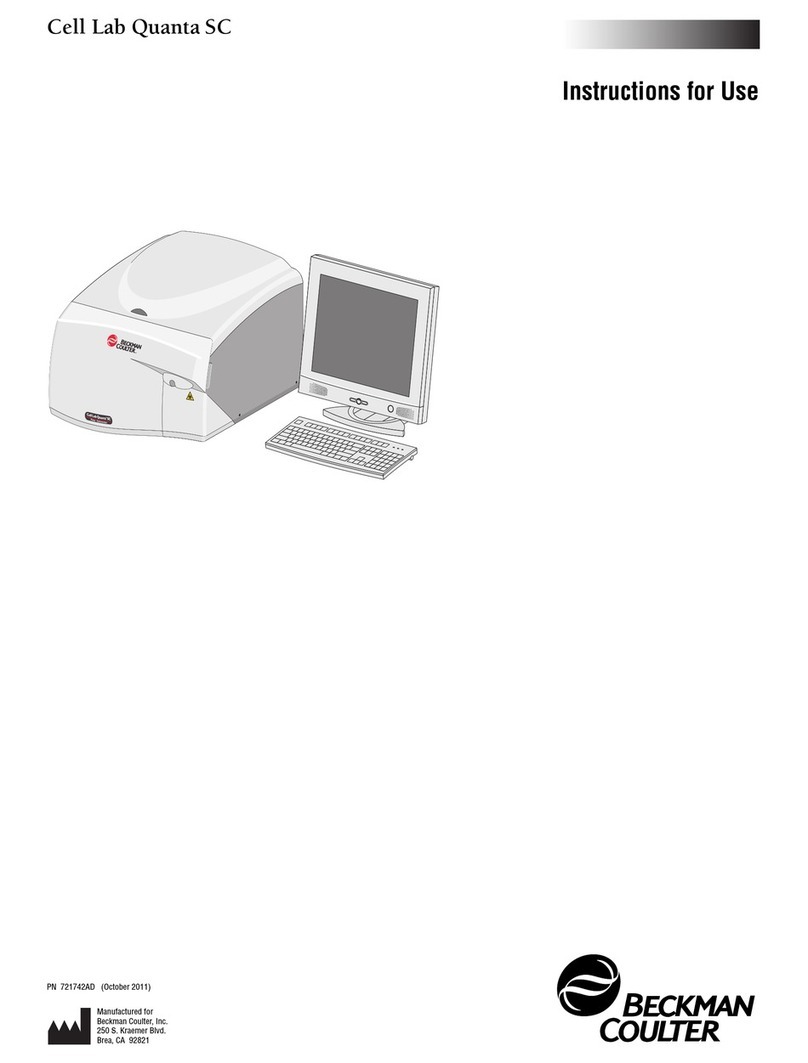
Beckman Coulter
Beckman Coulter Cell Lab Quanta SC Instructions for use

Elmi
Elmi CM-8S user manual
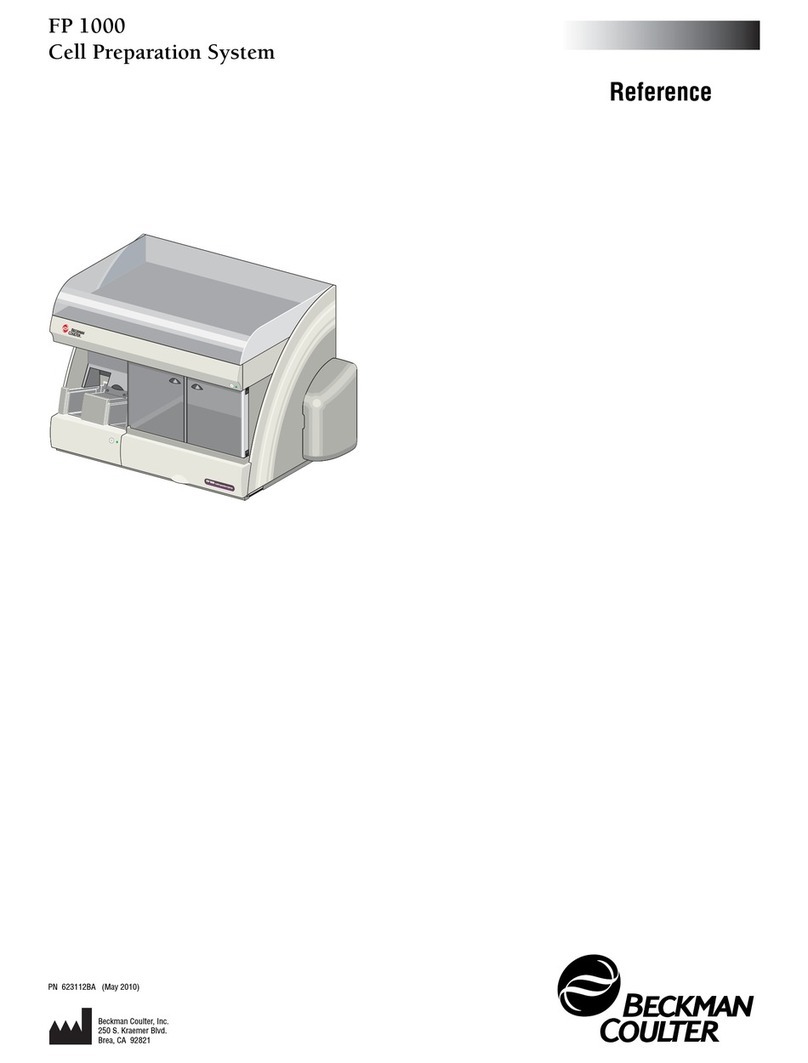
Beckman Coulter
Beckman Coulter FP 1000 manual
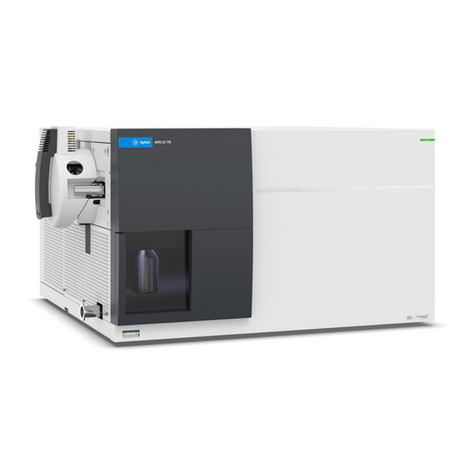
Agilent Technologies
Agilent Technologies 6475 user guide

Lotus cooker
Lotus cooker DRC 700 Instruction manual for installation, maintenance and use
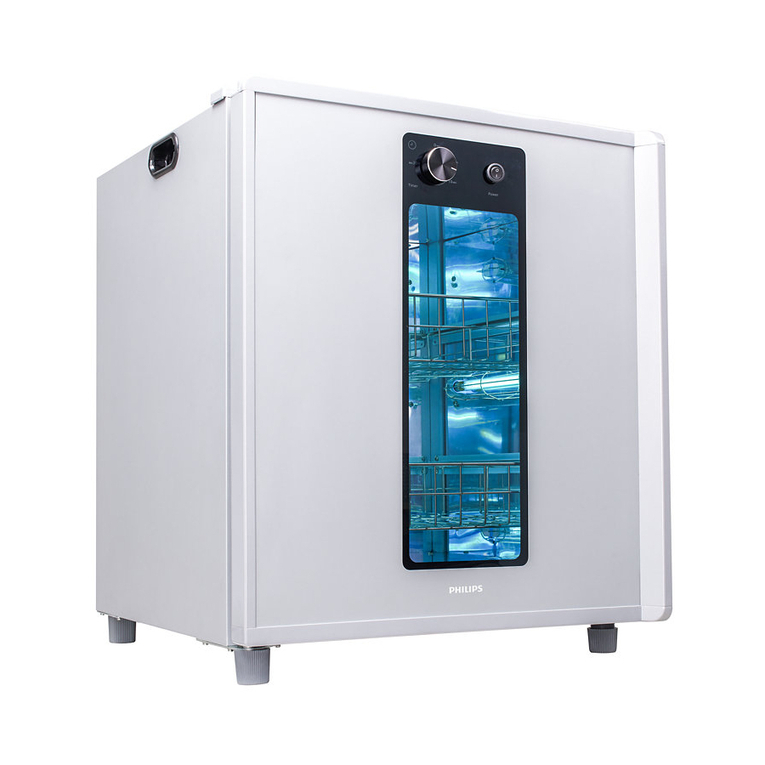
Philips
Philips UVCC200 80W instructions




